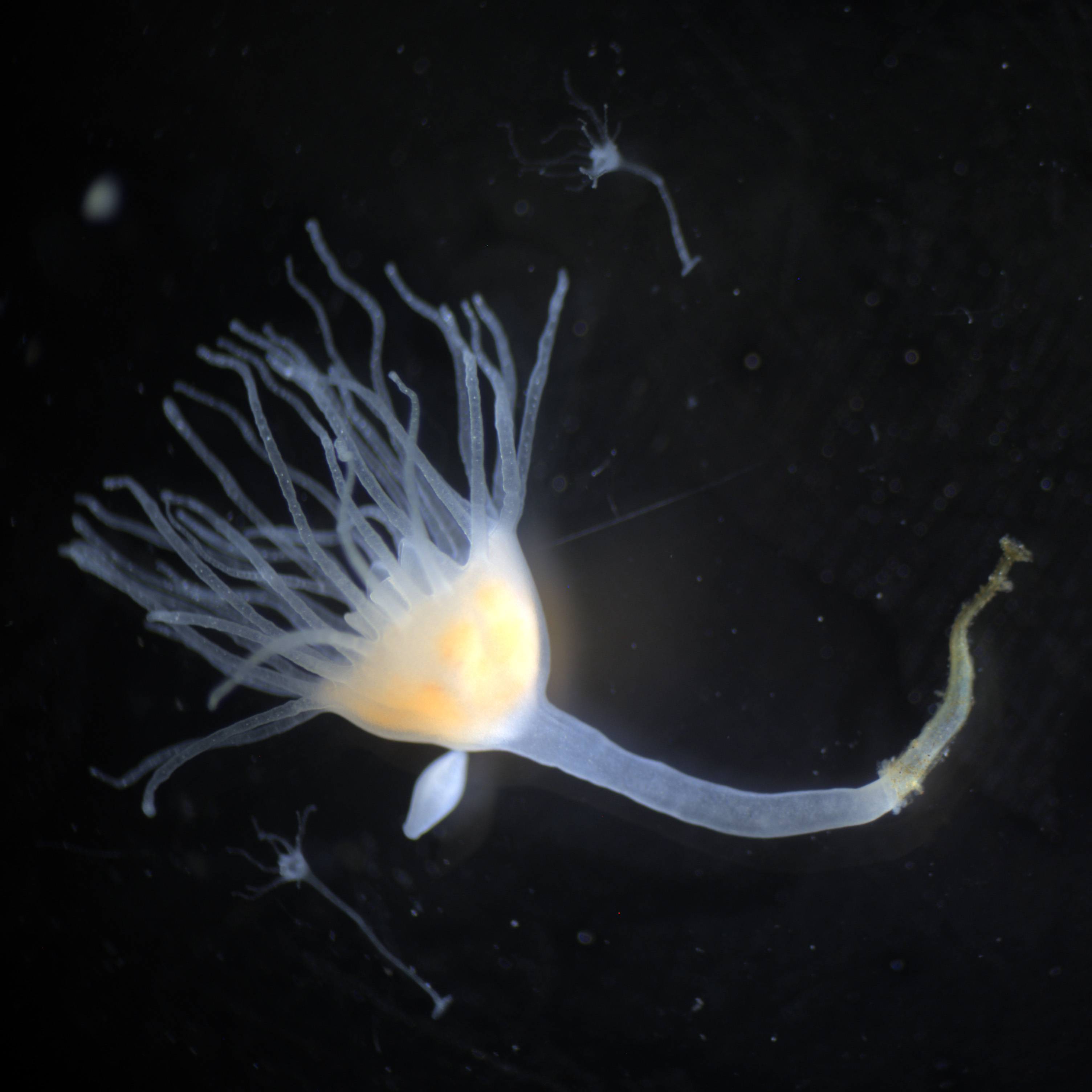
A big Whitney shout-out to the Martindale Lab for their recent $1M National Science Foundation three year grant to develop the “upside-down” jellyfish Cassiopea Xamachana as a new experimental model system for understanding a variety of interesting phenomena including photosymbiosis, innate immunity, and the environmental induction of novel cell types.
The grant entitled, ”EcoEvoDevo: Environmental Induction of Novel Cell Type and Generation of a Provisional Photosymbiosis Gene Regulatory Network for both Host and Symbiont” was co-reviewed by the Symbiosis/Immunity and the Developmental Mechanism programs at NSF.
One of the most dramatic examples of climate change is the bleaching of coral reefs worldwide. Many corals harbor photosynthetic dinoflagellate algae inside their gut cells, giving them a brown color. Coral bleaching is caused by the breakdown of this symbiotic relationship. During a bleaching event, photosynthetic dinoflagellate algae are either expelled or voluntarily leave the safety of coral host cells. Host cells benefit from food production through photosynthesis by the symbiont but host cells have to make decisions on which symbiont cells they allow to live inside their own cells and which cannot (self-nonself recognition).
Corals are endangered and difficult to work on in the lab, so the Martindale lab has developed an experimental animal model for coral bleaching, the upside-down jellyfish Cassiopea xamachana. Cassiopea is an ideal system to explore the concept and maintenance of self-nonself relationships during the establishment of stable photosymbiosis because their gut cells take up the same algae as corals. Furthermore, Cassiopea can be easily raised in the lab throughout its entire life cycle.
This project uses Fluorescent activated cell sorting (FACS), optical imaging, and single cell mRNA sequencing to follow the cellular and molecular responses of both host and symbiont in the establishment of stable symbiosis. Of particular interest is how the symbiont molecularly ‘hijacks’ the host innate immune system to avoid intracellular digestion. Putative gene regulatory networks for both host and symbiont will be generated at time points spanning the initiation and generation of stable symbiosis in both ‘good’ algae, and nonsymbiotic algal and microbial cells. This work will provide insight in to how to rebuild healthy coral reefs.
Image: Cassiopea Polyp